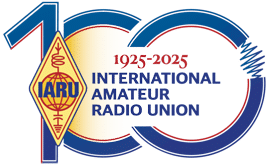This is a free fortnightly newsletter about the New Zealand Net.
If you would like to be notified by email when a new edition is published, please contact ZL1NZ.
Browse our Newsletter Archive and List of Net Tips.
Featured key
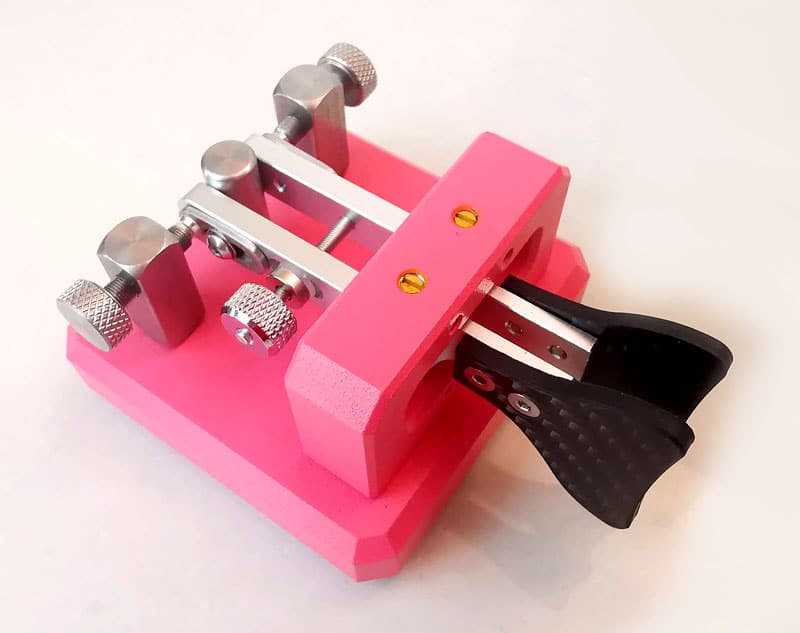
L&MAO dual lever paddles. Photo: John Tsui
Here’s a way to stand out from the crowd – pink paddles! Not your taste? Well, Chinese manufacturer L&MAO offers these dual-lever magnetic paddles in a range of more conventional colours too, including black, grey, blue, red and green.
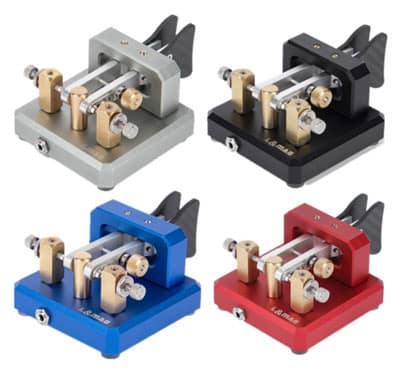 How well do they work? According to John Tsui, owner of the pink ones pictured here, his Vibroplex Iambic Deluxe “is a little bit better but L&MAO’s price is much much cheaper than Iambic Deluxe.”
How well do they work? According to John Tsui, owner of the pink ones pictured here, his Vibroplex Iambic Deluxe “is a little bit better but L&MAO’s price is much much cheaper than Iambic Deluxe.”
You can find L&MAO paddles at the usual online stores, for around NZ$125.
Later in this newsletter: a video showing these paddles being made.
* If you have an interesting key for this feature, please send me a nice clear photo and a few words describing it.
Quick notes
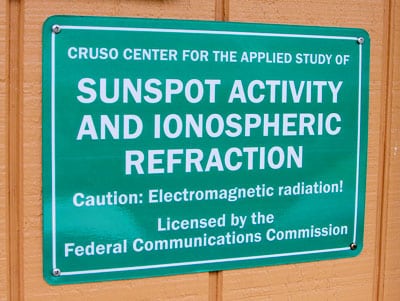 Do you have a sign for your ham shack? Please send a photo! Here’s a clever one created by a US amateur.
Do you have a sign for your ham shack? Please send a photo! Here’s a clever one created by a US amateur.
The first SKCC Oceania QRS Saunter will be held this Saturday from 0000Z to 2359Z. Operate at 12 wpm or slower. The event will be repeated on the 3rd Saturday of each month.
New Zealand will change to Daylight Saving Time next weekend. Although the NZ Net remains at 9pm local time year-round, overseas stations should note that, starting on 26 September, the net time will be 0800Z, rather than 0900Z.
Photo flashback
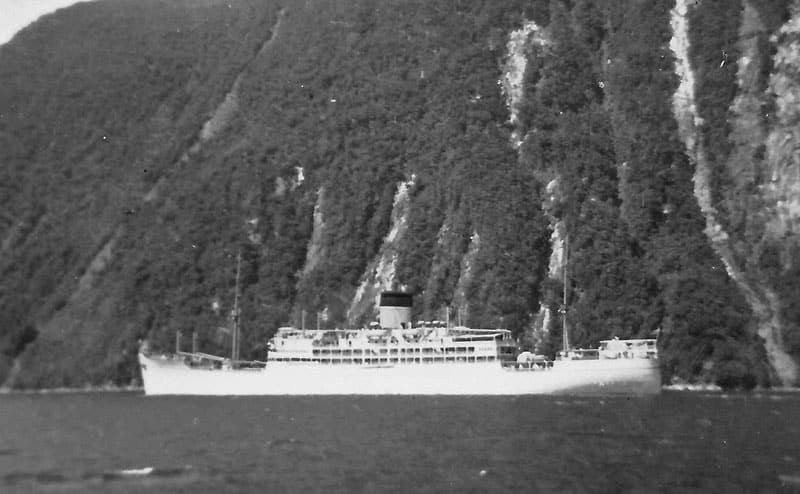
Royal Yacht Gothic in Milford Sound, 30 January 1954. Photo: Clyde Williams, maritimeradio.org
In 1953-1954, the royal yacht SS Gothic carried Queen Elizabeth II and the Duke of Edinburgh from the Caribbean via Panama to Fiji, New Zealand and Australia. The official New Zealand stops were Auckland and Wellington but there was also an unannounced visit to Milford Sound, captured on film by local radio operator Clyde Williams, who described the event for maritimeradio.org.
Later in this Net News, you can read about the radio gear aboard Gothic, a 15,902 grt merchant ship of the Shaw, Savill and Albion line, which was chartered to be the royal yacht for the 1951 tour by King George VI and Queen Elizabeth the Queen Mother. When the king became ill, that tour was cancelled. After the king died, Gothic finally sailed as the royal yacht for the tour by the new queen.
BBC podcast features amateur radio friends
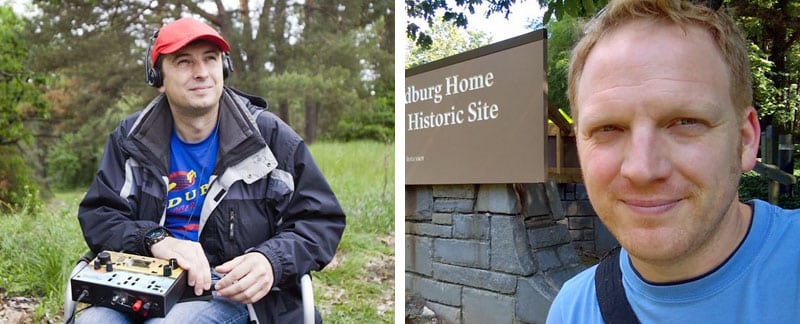
Vlad US7IGN (left) and Thomas K4SWL
Wolodymyr (Vlad) Gurtovy is a radio amateur in Kyiv, Ukraine and Thomas Witherspoon is an amateur in Swannanoa, North Carolina (yes, ZL2GD isn’t the only ham with a Swannanoa QTH!).
Vlad and Thomas are both keen CW ops who enjoy operating QRP in the forest, and they have become radio friends.
As a result of the Russian invasion of Ukraine, Vlad is off the air, but he and Thomas have still managed to keep in touch, as you can hear in this podcast from the BBC.
The podcast is in high fidelity stereo, so plug in your earphones or turn up your speakers for the best experience. The item about Vlad and Thomas begins at 1:33 of the recording.
If you enjoyed that, be sure to visit Vlad’s page on qrz.com for a video of one his trips to the forest – back before the war.
VK4PN’s easy-to-make ladder line

By Sava VK4PN
Balanced line or open-wire feeder is an alternative to coaxial cable but not as readily available. It is however easy to make, with all components available from hardware stores.
 The picture shows two of the items required: 50mm blue plastic masonry plugs and 2.5mm black zip ties.
The picture shows two of the items required: 50mm blue plastic masonry plugs and 2.5mm black zip ties.
The third item is Figure 8 PVC-coated cable, either for 240V AC or a heavier gauge speaker wire.
A masonry plug will be spaced every 25-35cm of feeder length. Blue plugs have the largest inner opening and will accept two back-to-back zip ties 15cm long and 2.5mm wide. 1.5 mm zip ties are even better but not ready available. Make sure that the zip ties are UV rated!
A suitable length of figure 8 wire is split into two separate conductors. Each conductor is attached to a pole or a fence approximately 10 cm apart. Comfortable working height is waist high. The other end of the two conductors is attached to any suitable object at approximately the same height and spacing and stretched tight, so that the two wires will be almost parallel.
Insert two zip ties into each spacer as shown above and attach the spacer to the two wires. Tighten the zip ties but not too firm. After half a dozen or so spreaders are fitted use a ruler to position the spacers along the wire with approximately 30cm between spacers.
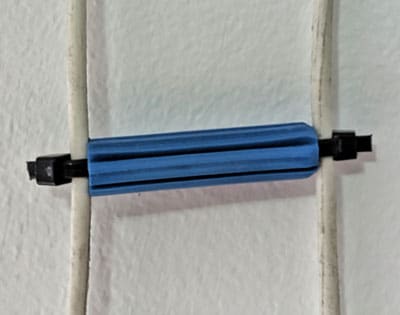 This process continues until the full length of the balanced line is spaced. At this stage spacers can be fixed permanently. The best method is to use two pairs of pliers and pull the zip tie ends in opposite directions until loops firmly grip the feeder wires. Excess zip tie ends can be snipped off but leave a tail of approximately 3mm for any future re-tightening.
This process continues until the full length of the balanced line is spaced. At this stage spacers can be fixed permanently. The best method is to use two pairs of pliers and pull the zip tie ends in opposite directions until loops firmly grip the feeder wires. Excess zip tie ends can be snipped off but leave a tail of approximately 3mm for any future re-tightening.
If you want to know the impedance of your balanced line there are numerous calculators on the web. With 50mm blue masonry plugs and 0.75 mm² figure 8 wire, the impedance will be somewhere between 450 and 600 ohms.
Radio gear aboard the royal yacht Gothic
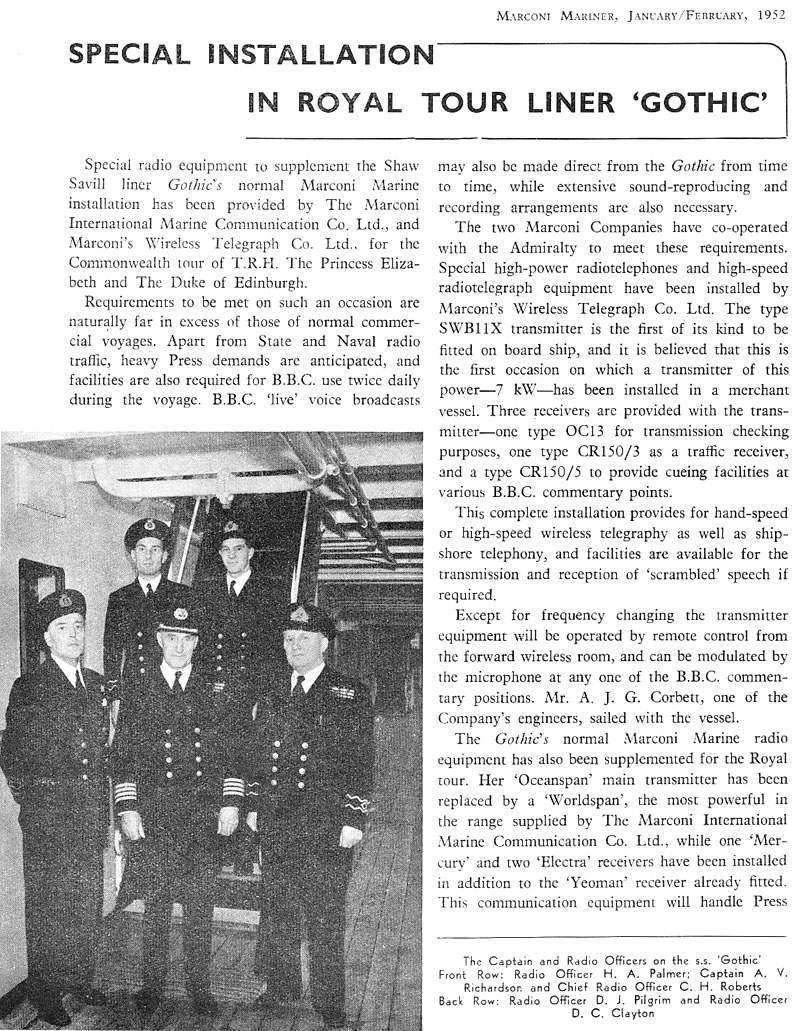
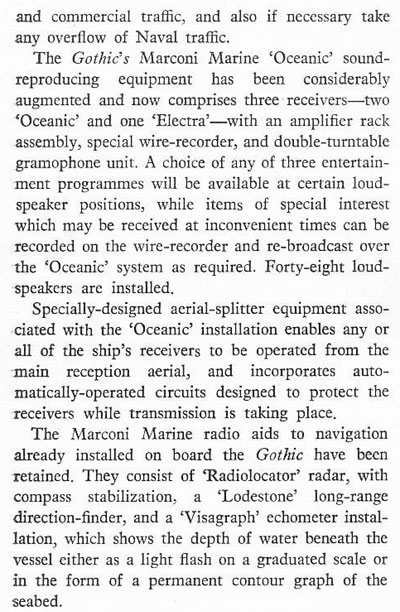
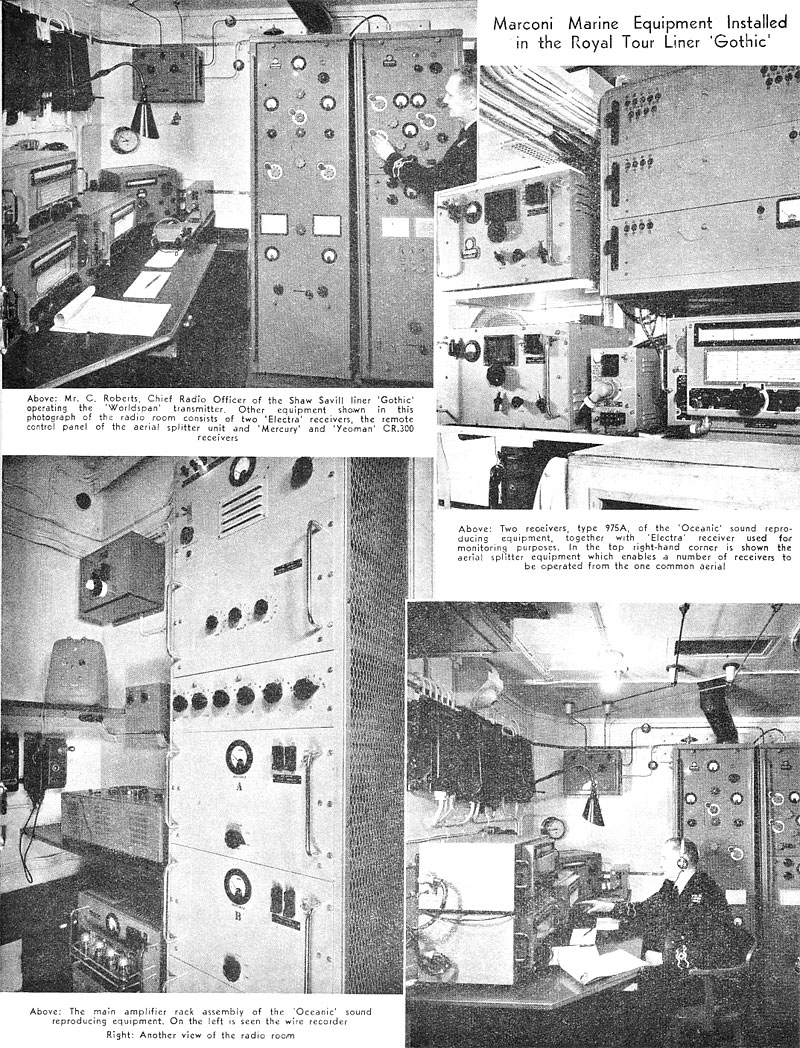
Morse challenge
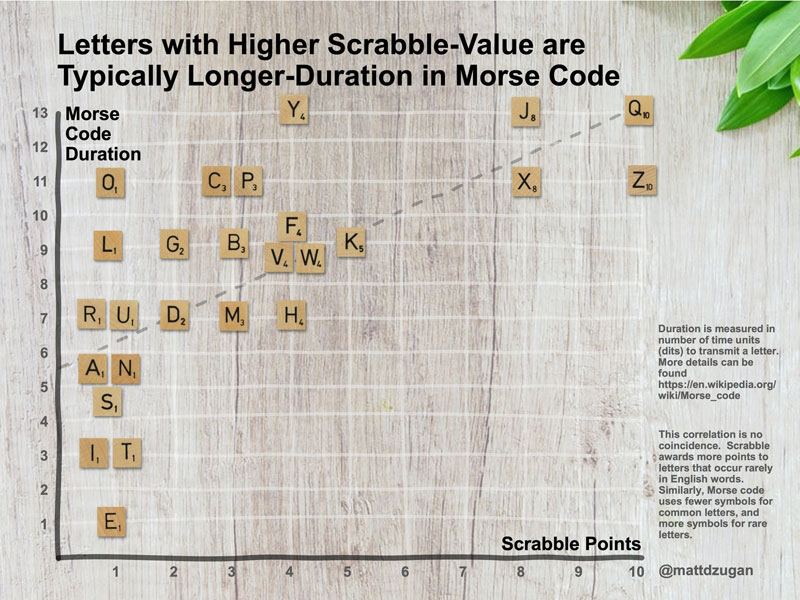
Data scientist Matt Dzugan created this graph, and says:
“Scrabble-Points and Morse Code both account for how frequently each letter is used in English. Should be no surprise that they are correlated.”
One letter which does not fit this pattern is O, which occurs frequently in English, but has a long length in Morse code.
Your challenge is to tell me the reason for this anomaly. Need a hint?
Please send your answer to me via radiogram, or via email if you don’t have propagation.
Answer to previous edition’s Morse Challenge
First, an apology. Shortly after publishing NZ Net News 88, I realised I had already featured that particular audio recording two years ago. So it may have sounded familiar to you. On the other hand, I don’t think it got any easier to copy the second time around!
Here it is again:
The shipboard Radio Officer in this recording was pretty casual about character spacing, so it was very hard to understand his callsign – but I think Bob ZL1AYN probably got it right. Here is what Bob copied, plus my comments:
ZLD ZLD DE UKRQ UKRQ MSG K
A Soviet vessel is calling Auckland Radio ZLD on 500 kHz. The ship’s callsign could also have been UNCQ or even UCNQ. MSG is probably right, although it sounds more like 7G in the recording.
Auckland Radio ZLD then replied very clearly, asking the vessel to QSY to ZLD’s working frequency:
UP <AS>
The ship acknowledged with:
R UP
Thanks to everyone who attempted to copy this, and I’ll try not to inflict it on you ever again!
Video: L&MAO paddle manufacturing
Advertising archive
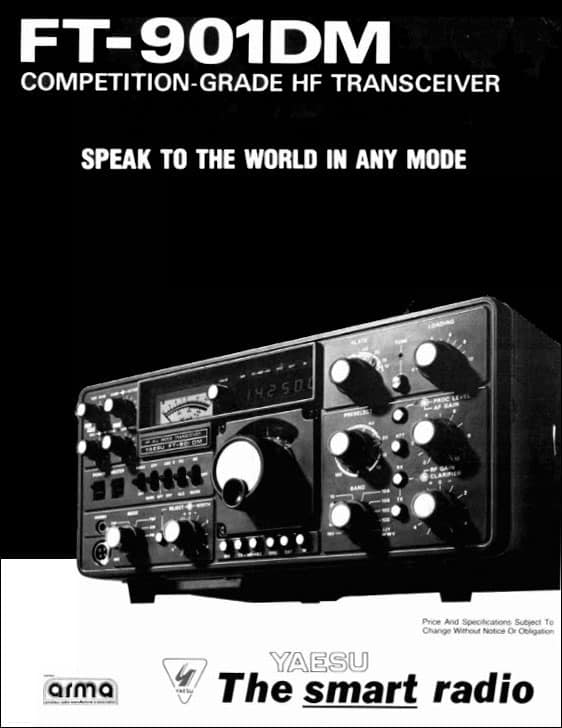
Ham Radio magazine, March 1978
Suggestions?
If you have suggestions on how to make the NZ Net better, or things you’d like to see covered in these updates, please contact ZL1NZ. You might even like to write something for the newsletter.
Thanks for reading, and I hope to hear you soon on the NZ Net!
—
Neil Sanderson ZL1NZ, Net Manager
New Zealand Net (NZ NET)
3535.0 kHz at 9pm NZT Mon-Fri



